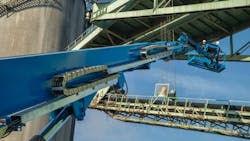2Q16 Baird/RER Survey Shows Stability, But Questions Sustainability
Rental equipment demand held generally stable in the second quarter of 2016, but nervousness on the sustainability of the construction cycle emerged, according to the 2Q16 Baird/RER Rental Survey. The second quarter survey showed general stability compared to the first quarter, continuing a slight improvement off of 2015’s nadir. Respondents cite generally healthy residential/non-residential construction trends, but uncertainty when it comes to stability.
Pricing remains competitive, the survey showed, led by larger firms, with some negative impact from a wet spring in certain markets such as Texas. Government uncertainty, somewhat weak demand and self-fulfilling recession fears were noted as the biggest risk factors.
Rental revenue growth held stable, the survey shows. Q216 average year over year rental revenue growth of 5.4 percent held steady compared to the first quarter’s 5.2 percent increase, showing further gains compared to the fourth quarter’s low point of 4.1 percent.
Rental rates remain relatively weak, rising 0.3 percent year over year, a slight downtick from 0.7 percent in the first quarter and the fifth consecutive quarter of less than 1 percent gains. Previous rate increases were in the 3- to 5-percent range.
Utilization rates improved slightly to 55.3 percent compared to 52.7 percent in the previous quarter.
The outlook for growth remains cautiously optimistic, rental companies said, with near to middle rental revenue forecasts generally stable at 6.2 percent, down slightly from 7.1 percent last quarter.
Planned fleet investment has continued to grow, with investment in new fleet expected to grow 6.3 percent over the near to midterm, the third consecutive quarter of improving spend forecast. Accordingly, the cost of new units increased slightly year over year at about 3 percent, compared to 2.1 percent last quarter.
The average fleet size, in terms of units, grew 2.5 percent year over year in the second quarter, lagging behind revenue growth, which was 5.4 percent. Slower fleet growth is a positive for the rental industry as it should ease excess capacity and support rental rate improvement.
Every quarter in conjunction with RER, Baird’s Industrial Equity Research team conducts a quarterly survey of construction rental equipment firms. Respondents are senior executives at rental equipment companies serving a variety of residential, nonresidential and industrial markets in North America.
About the Author
Michael Roth
Editor
Michael Roth has covered the equipment rental industry full time for RER since 1989 and has served as the magazine’s editor in chief since 1994. He has nearly 30 years experience as a professional journalist. Roth has visited hundreds of rental centers and industry manufacturers, written hundreds of feature stories for RER and thousands of news stories for the magazine and its electronic newsletter RER Reports. Roth has interviewed leading executives for most of the industry’s largest rental companies and manufacturers as well as hundreds of smaller independent companies. He has visited with and reported on rental companies and manufacturers in Europe, Central America and Asia as well as Mexico, Canada and the United States. Roth was co-founder of RER Reports, the industry’s first weekly newsletter, which began as a fax newsletter in 1996, and later became an online newsletter. Roth has spoken at conventions sponsored by the American Rental Association, Associated Equipment Distributors, California Rental Association and other industry events and has spoken before industry groups in several countries. He lives and works in Los Angeles when he’s not traveling to cover industry events.
